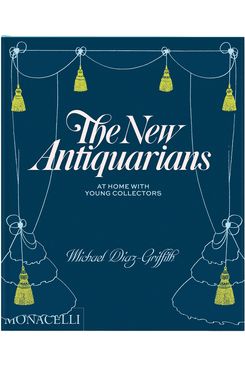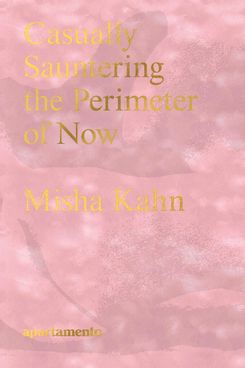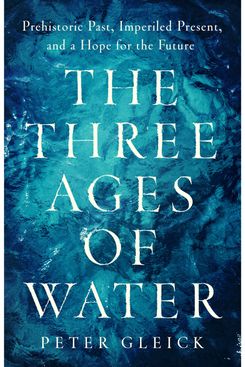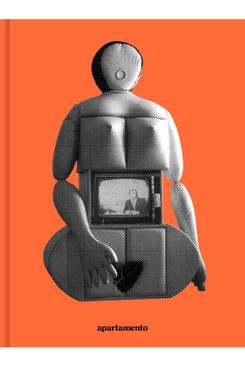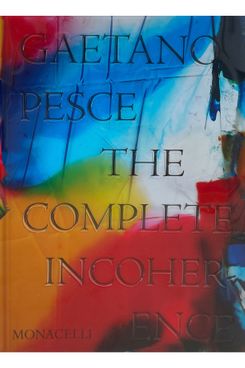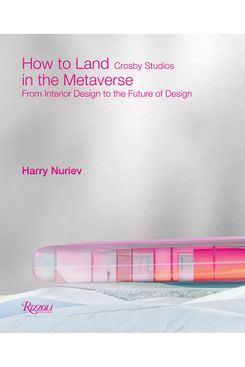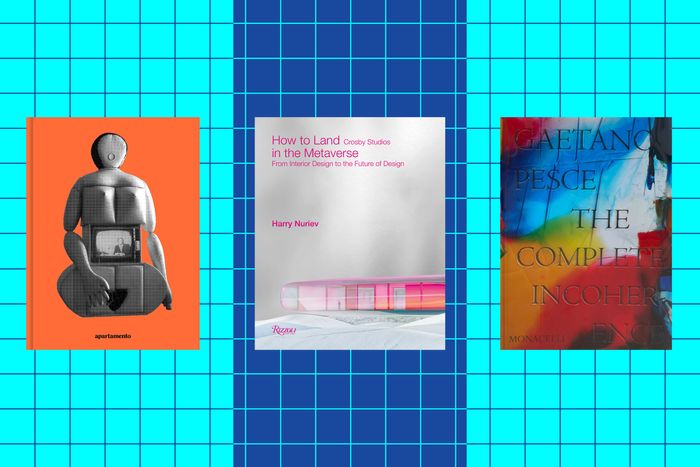
There happen to be a lot of really good design books that either just hit or are about to hit bookstores. It’s ideal for summer when we’re more inclined to read for pure pleasure. While only one of the following could conceivably be a beach read (designer Misha Kahn’s first book), the rest are page-turners in their own right. Below are eight of our favorite new releases, including a deep dive into Isamu Noguchi’s lifelong affair with Greece and the first monograph on Nicola L.’s feminist furniture.
Antique dealers have considered the past 20 years an “apocalyptic” time with 9/11 and the 2008 recession decimating the market for old furniture. People were looking but not buying — millennials especially. But recently, Michael Diaz-Griffith, an art historian and designer, noticed a revival of interest in very old things was underway, “regenerating in the background.” His new book, New Antiquarians: At Home With Young Collectors, defines this new era of eclectic connoisseurship through 17 home tours. The ravishing interiors include fashion designer Emily Adams Bode’s Chinatown apartment, which (naturally) is filled with vintage textiles; gallerist Alex Tieghi-Walker’s former Los Angeles bungalow furnished with Shaker-inspired chairs and an Indian table that once belonged to his great-grandparents; and the Lower Fifth brownstone of antiques dealer Emily Eerdmans, who collects English Regency cabinets and consoles. —Diana Budds
In the introductory essay to Misha Kahn’s first book, Casually Sauntering the Perimeter of Now, design historian Glenn Adamson notes that Kahn wanted the book to be a “beach read.” That gives you an indication of how much this volume, published by Apartamento, is unlike anything you’d expect from a designer’s first book. It doesn’t have big glossy pages and isn’t in fact big at all — it’s the size of a standard paperback and is filled with conversations between Kahn and his friends, including Dries Van Noten, WangShui, and Todd Oldham. That intimate, lighthearted sensibility also shows up in the handwritten notes embedded in the text, the kind editors write in the margins of a manuscript, which give the reader a feeling of being in the trenches with Kahn as he figures out what he wants the book to be. The result is pure originality and joy. —Wendy Goodman
Starting with the Big Bang, Gleick traces the history of water systems from molecular to planetary and explains how our perhaps once-benevolent intentions to harness water’s powers for good have put all of humanity in crisis. As the co-founder of the Pacific Institute, Gleick is a go-to for commentary on climate impacts like droughts and floods, and his most astonishing passages in this book reveal how water manages to wind its way into the center of virtually every societal conflict. It’s a timely read as alfalfa farmers bicker over the Colorado River, hackers threaten water-treatment plants with cyberattacks, and Russia destroys yet another dam in Ukraine. But this is more than just a clear-eyed history of our most precious resource; it’s also a guide for how to better manage it in the future. Ultimately, the innate human urge to control our water must be completely rethought in order to save ourselves. —Alissa Walker
Nicola L. — an artist who was born in Morocco in 1932, grew up in Paris, and lived at the Chelsea Hotel for years — noticed there wasn’t much difference between how furniture and women’s bodies were perceived: They were both regarded as objects to be used. So she created satirical anthropomorphic cabinets with drawer pulls where nipples would be, sofas with arms and legs for cushions, and other functional artworks that reference female figures. One of her sculptures, a piece titled Little TV Woman: I Am the Last Woman Object, has a television for a midsection, displaying the words “I am the last woman object. You can take my lips, touch my breasts, caress my stomach, my sex. But I repeat it, it is the last time.” Despite her conceptually and visually audacious work, Nicola L. was overlooked for most of her career and received her first survey exhibition only in 2017 when she was already in her 80s. Now, four years after her death, she finally has a monograph, Nicola L.: Life and Art, written by Omar Sosa, the co-founder of Apartamento, and Hannah Martin, a design editor at Architectural Digest. With archival photos, interviews with the artist’s family and friends, and excerpts from her diaries, it’s a remarkably extensive and intimate book. —D.B.
Gaetano Pesce: The Complete Incoherence is essentially an extended conversation between the 83-year-old “Pope of Gloop” and Glenn Adamson. The two talked seven times over the course of a year to make this book, which chronicles the artist’s philosophy, his ramblings on politics, and the works that made him famous. Adamson has a gift for getting Pesce to divulge lots of little details. (His drug of choice? Cocaine, never marijuana, and opium “as a way to dream.”) The book effectively functions as a career retrospective and life story (though Pesce continues to make new work, and new monographs about him seem to be an annual event). Through its pages, his lifelong interest in experimentation reveals a practice defined more by a rebellious spirit than a linear evolution of style. —D.B.
David Adjaye’s highly textured buildings come alive when the light hits them just right. This is because of the way he uses materials, from the ornate bronze screens enveloping the National Museum of African American History and Culture to the mottled charcoal-gray concrete on his 130 William Street tower and the shimmery glass façade of the Francis A. Gregory Library in Washington, D.C. It’s a pleasure to see this tactile approach up close in Alchemy: The Material World of David Adjaye, a new book by the Slowdown’s Spencer Bailey, which offers deep dives into 30 of the British Ghanaian architect’s projects, all of which reflect his skillful approach to stone, concrete, glass, metal, wood, and mud. —D.B.
Isamu Noguchi had a lifelong obsession with Greece that started with the myths he read as a child (“I believed in Apollo and all the gods of Olympus before I knew of any other,” he wrote in his 1968 autobiography) and culminated in a body of work deeply influenced by the forms and materials he encountered on his frequent trips there. “Greece … Oh, it’s my love,” Noguchi said after visiting the country for the first time in 1949. “I feel as if I were born here. I think that every artist who discovers Greece must feel the same.” Noguchi and Greece, Greece and Noguchi, a new book by Objects of Common Interest, the Athens- and New York–based design studio run by Eleni Petaloti and Leonidas Trampoukis, explores just how much the country’s landscapes and artistic heritage influenced the sculptor’s worldview and, in turn, how Noguchi influenced Greek artists like themselves. Their interest began when they guest-curated an installation at the Noguchi Museum in 2021, featuring their sculptures in conversation with Noguchi’s. The book feels like a mirror of their creative process with the first volume focused on research into Noguchi’s work (with dozens of archival photos) and the second on contemporary responses to it. —D.B.
Harry Nuriev, the founder of Crosby Studios, has mastered the art of the viral sofa. He has made them out of plastic cushions stuffed with discarded Balenciaga garments, a pile of trash bags, and Nike puffer jackets (this one was only a rendering). The fact that all of these have become internet sensations shows how well Nuriev navigates both the physical and the virtual worlds, designing objects with the bold colors, intriguing shapes, and conceptual wit that always do well online without making the same thing over and over again. This is partly because he started his studio in 2014 when aesthetics were flattened by algorithms (Airspace, anyone?) and he was beginning to experiment with how to break away from the uniformity he saw in interior design. Nuriev emerged with a design language he calls “transformism,” described in his new book, How to Land in the Metaverse, as “rethinking and reevaluating the spaces and objects around us.” The compendium shows how Nuriev’s curiosity, inquisitiveness, and interest in blending fashion with interior design have made for visually arresting objects and spaces that live online and IRL. —D.B.
